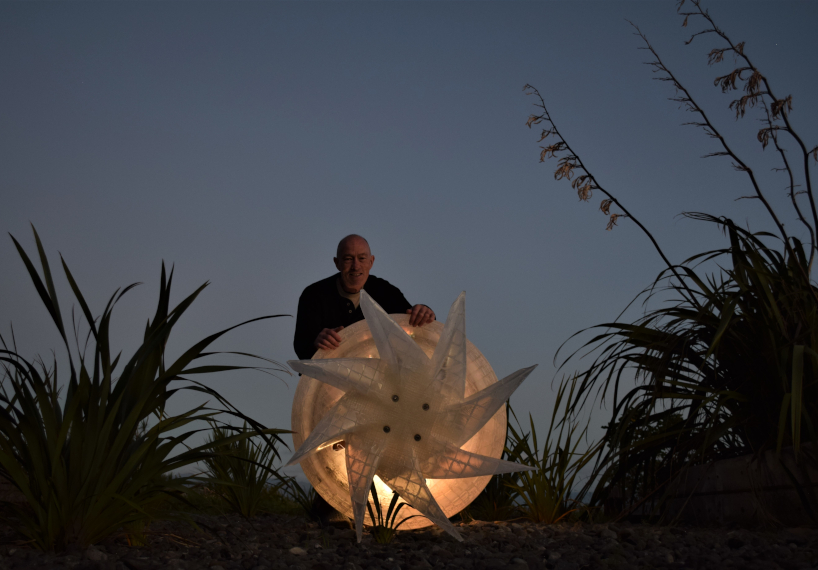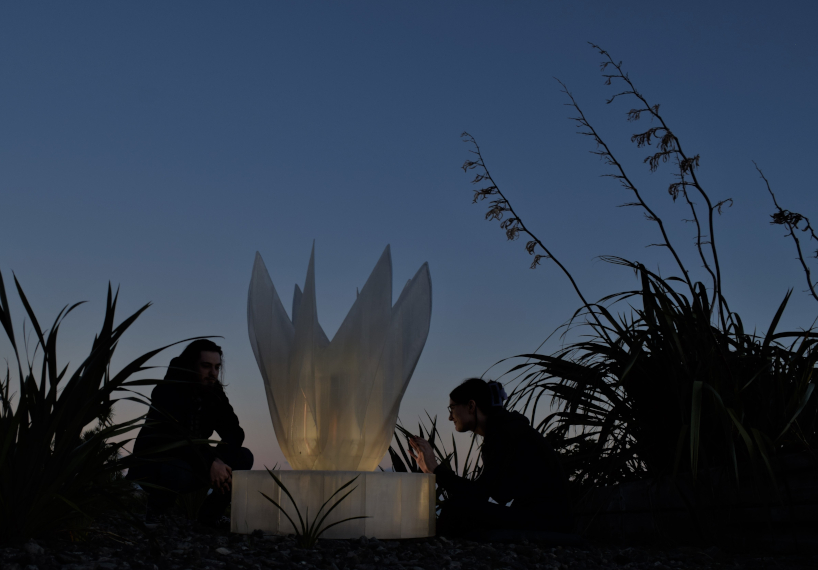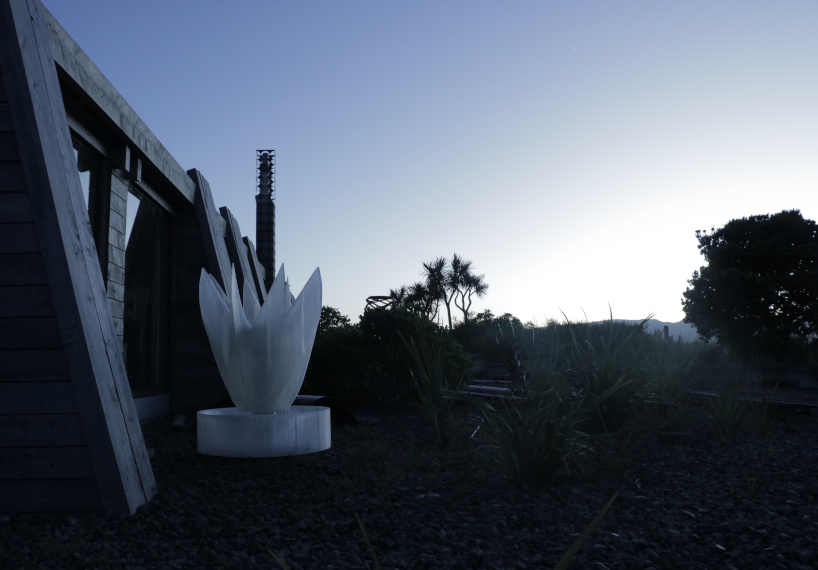ross stevens’ Wind turbine takes cues from nature
Ross Stevens’ potted plant-inspired wind turbine Multi-material showcases its potential 3D Printing Craft large-scale and It is a recyclable material Products. Created in collaboration Nicole HonePower Pot Plant combines technology, renewable energy and nature to create a wind turbine that is 3D-printed. It provides power while conserving the environment. This innovative design embraces sustainable principles while offering a glimpse at a sustainable future with both aesthetic and ecologically sound energy solutions.
The duo was inspired by plants for this project. This is reflected in its visual flower-like form, its materiality, and its compact portability. The Power Pot Plant is made from a biopolymer, PLA, which comes directly from plants. Its design ensures that materials can be separated so the turbine can easily be disassembled for recycling.

the wind turbine’s blades are based on the Savonius rotor principle | all images courtesy of Ross Stevens
‘power pot plant’ fuses technology, nature, & renewable energy
Industrial designer and senior lecturer Ross Stevens’ recent research delves into multi-material 3D printing at the micro scale, inspired by plants. The base of the turbine is secured by using locally-sourced materials, such as soil, rocks, and even plants. They can be removed easily and returned to the original source when the turbine is moved.
Further, the Power Pot Plant’s ecological impact aligns with the broader goal of increasing locally produced renewable energy to support the growing fleet of battery-powered vehicles. Utilizing advances in low-cost and higher-power batteries designed for electric cars, the domestic-scaled Turbine allows homes to harness energy from sources such as the sun or wind.

Power Pot Plant produces heat and lights after collecting energy for a full day
Ross Stevens is a long-time proponent of digital manufacturing. He pioneered 3D print research in 2004 and founded digital making company Ponoko in 2007. He admits that 3D printing may not have lived up to the hype at first, but it has a competitive edge when dealing with large objects or complex items that are too big for traditional molding.
His latest research and development project is supported by the MADE group Victoria University of Wellington, Victoria University of Wellington, showcases the feasibility of using recyclable and low-impact materials in a visually appealing yet efficient way.

The wind turbine’s intricate, flower-like shape complements architectural and landscape design